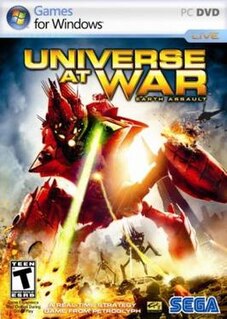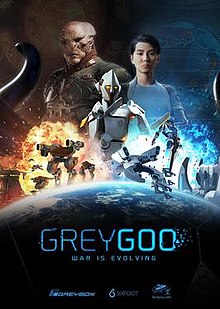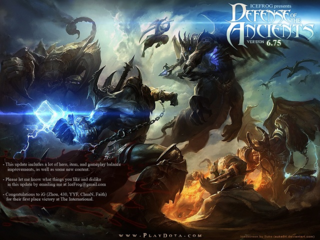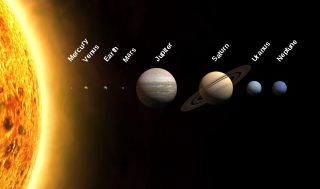Command & Conquer (C&C) is a real-time strategy (RTS) video game franchise, first developed by Westwood Studios. The first game was one of the earliest of the RTS genre, itself based on Westwood Studios' influential strategy game Dune II and introducing trademarks followed in the rest of the series. This includes full-motion video cutscenes with a notable ensemble cast to progress the story, as opposed to digitally in-game rendered cutscenes. Westwood Studios was taken over by Electronic Arts in 1998 and closed down in 2003. The studio and some of its members were absorbed into EA Los Angeles, which continued development on the series.

Petroglyph Games is a video game developer and publisher based in Las Vegas, Nevada, United States. The company was formed by the last group of ex-Westwood Studios employees who resigned when Westwood Pacific was shut down by Electronic Arts in 2003, effectively assimilating Westwood Studios into the EA Pacific studios in Los Angeles to form EA Los Angeles.

Star Wars: Empire at War is a 2006 real-time strategy video game developed by Petroglyph Games and published by LucasArts. Set between Episode III and Episode IV, it focuses on the fledgling struggle between the Empire and the Rebels. It uses Petroglyph's game engine Alamo. In October 2006, an expansion titled Star Wars: Empire at War: Forces of Corruption was released. On May 31, 2014, online functionality, including network multiplayer and wireless chat, was discontinued after Glu Mobile's purchase of GameSpy and the subsequent shutdown of all game servers. As of September 1, 2017, the multiplayer has been re-enabled on the Steam version as well as workshop support being added.

Dungeons & Dragons: Dragonshard is a real-time strategy role-playing video game, developed for Microsoft Windows by Liquid Entertainment, and published by Atari in 2005. It takes place in Eberron, one of the official Dungeons & Dragons campaign settings. The game combines elements of traditional real-time strategy gameplay with role-playing elements such as hero units, and questing. Dragonshard includes two single-player campaigns, single-player skirmish maps, and multiplayer support. The single-player campaign follows the struggles of three competing factions to gain control of a magical artifact known as the Heart of Siberys.

Command & Conquer 3: Tiberium Wars is a military science fiction real-time strategy video game developed and published by Electronic Arts for the Windows, Mac OS X and Xbox 360 platforms, and released internationally in March 2007. The direct sequel to 1999's Command & Conquer: Tiberian Sun by Westwood Studios which was taken over and liquidated by EA in 2003, Tiberium Wars returns the Command & Conquer series to its roots in the Tiberium story arc of the franchise, again featuring the factions of the Global Defense Initiative and the Brotherhood of Nod, and also introducing a new extraterrestrial faction known as the Scrin. An expansion pack to Tiberium Wars, titled Command & Conquer 3: Kane's Wrath, was released on March 24, 2008.

Universe at War: Earth Assault is a real-time strategy game, developed by Petroglyph Games and published by Sega. Universe at War: Earth Assault was intended to be the first game in a planned series of games to be called the Universe at War series.
Saga is a massively multiplayer online real-time strategy game. Saga is touted as the world's first collectible online real-time strategy game. Saga was released on March 4, 2008 after a brief open Beta which began February 26, 2008. Developed by American studios Wahoo Studios and Silverlode Interactive, the game ran a closed Beta starting July 5, 2007. The title has no subscription fees, instead being supported by the release of booster or expansion packs. It is possible to play a free version of the game, with certain features locked, at the Saga official site.

Halo Wars is a real-time strategy (RTS) video game developed by Ensemble Studios and published by Microsoft Game Studios for the Xbox 360 video game console. It was released in Australia on February 26, 2009; in Europe on February 27; and in North America on March 3. The game is set in the science fiction universe of the Halo series in the year 2531, 21 years before the events of Halo: Combat Evolved. The player leads human soldiers aboard the warship Spirit of Fire in an effort to stop an ancient fleet of ships from falling into the hands of the genocidal alien Covenant.

AI War: Fleet Command is a real time strategy computer game created by independent developer Arcen Games. The game was first released on the Arcen Games website and Impulse on June 2, 2009, before getting a Steam release on October 16, 2009 that coincided with the release of version 2.0. AI War blends the 4X, tower defense, and traditional RTS genre to create something that was hailed as unique but with a steep learning curve. Players go up against two artificial intelligence (AI) opponents that are superior to the player. The objective is to destroy the home planets of both AI opponents.

Zero-K is a free multi-platform open source real-time strategy video game. Initially based on content from Total Annihilation on the open source Spring Engine, it was forked and all proprietary content replaced, and evolved into a completely new game with unique features. Among the games powered by the Spring game engine, Zero-K makes extensive use of Lua scripting for interface and gameplay changes/enhancements, as well as unique RTS concepts such as a flat technology tree.

Dragon Age: Inquisition is an action role-playing video game developed by BioWare and published by Electronic Arts. The third major game in the Dragon Age franchise, Dragon Age: Inquisition is the sequel to Dragon Age: Origins and Dragon Age II. The game was released worldwide in November 2014 for Microsoft Windows, PlayStation 3, PlayStation 4, Xbox 360, and Xbox One.
Endless Space is a turn-based strategy, science fiction 4X game developed by Amplitude Studios released on July 4, 2012, for Microsoft Windows and August 31, 2012 for Mac OS X. It sold over 500,000 units.

Planetary Annihilation is a real-time strategy PC game originally developed by Uber Entertainment, whose staff included several industry veterans who worked on Total Annihilation and Supreme Commander. A standalone expansion pack for Planetary Annihilation has been released which adds powerful Titan-class units, called Planetary Annihilation: TITANS.

Total War: Attila is a strategy video game developed by The Creative Assembly and published by Sega, released on 17 February 2015 for Microsoft Windows, OS X, and Linux. It is the ninth standalone game in the Total War series of video games.

Battlefleet Gothic: Armada is a real-time strategy video game developed by Tindalos Interactive and published by Focus Home Interactive. It is set in the fictional universe of Warhammer 40,000, and is specifically an adaptation of the miniature wargame Battlefleet Gothic by Games Workshop.

Total War: Warhammer is a turn-based strategy and real-time tactics video game developed by Creative Assembly and published by Sega for Microsoft Windows via the Steam gaming platform. The game was brought to macOS and Linux by Feral Interactive. The game features the gameplay of the Total War series with factions of Games Workshop's Warhammer Fantasy series; it is the first Total War game not to portray a historical setting. It is the 10th title in the Total War series and the first title to be released in the Total War: Warhammer trilogy.

Homeworld: Deserts of Kharak is a real-time strategy video game developed by Blackbird Interactive and published by Gearbox Software. The game was released on January 20, 2016, and is a prequel to the 1999 space-based real-time strategy video game Homeworld.

8-Bit Armies is a real-time strategy video game developed by Petroglyph Games, which was released on April 22, 2016 for Microsoft Windows and for Xbox One, PlayStation 4 and Nintendo Switch in 21 September 2018.

8-Bit Hordes is a real-time strategy video game developed by Petroglyph Games, which was released on August 12, 2016 for Microsoft Windows. It uses the same engine as its predecessor 8-Bit Armies, but is now based in a fantasy themed scenario.
A self-replicating machine is a type of autonomous robot that is capable of reproducing itself autonomously using raw materials found in the environment, thus exhibiting self-replication in a way analogous to that found in nature. Such machines are often featured in works of science fiction.






















